Loro: Reimagine State Management with CRDTs
In this article, we share our vision for the local-first software development paradigm, explain why we're excited about it, and discuss the current status of Loro.
With better DevTools, documentation, and a friendly ecosystem, everyone can easily build local-first software.
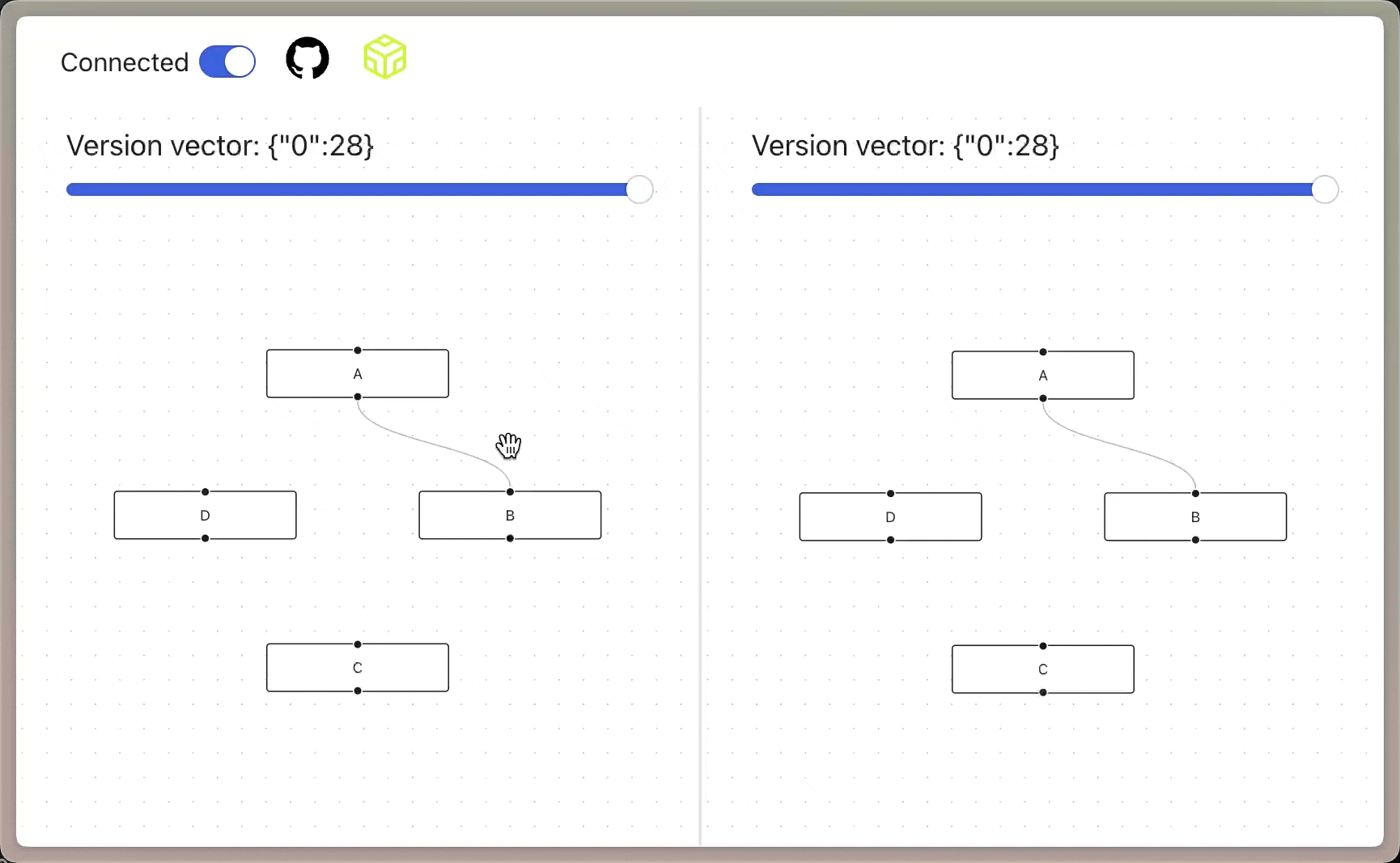
You can build collaborative apps with time travel features easily using Loro. Play the example online (opens in a new tab).
Envisioning the Local-First Development Paradigm
Distributed states are commonly found in numerous scenarios, such as multiplayer games, multi-device document synchronization, and edge networks. These scenarios require synchronization to achieve consistency, usually entailing elaborate design and coding. For instance, considerations for network issues or concurrent write operations are necessary. However, for a wide range of applications CRDTs can simplify the code significantly:
- CRDTs can automatically merge concurrent writes without conflicts.
- Fewer abstractions. There's no need to design specific backend database schemas, manually execute expected conflict merges, or implement interfaces to memory and memory to persistent structure conversions.
- Offline supports are right out of the box
What are CRDTs
What are Conflict-Free Replicated Data Types (CRDTs)?
CRDTs are data structures used in distributed systems that allow updates to be merged across multiple replicas without conflicts. In this context, "replicas" refer to different independent data instances within the system, such as the same collaborative document on various user devices.
CRDTs enable users to operate independently on their replicas, like editing a document, without needing real-time communication with other replicas. The CRDTs merge these operations, ensuring all replicas achieve "strong eventual consistency". As long as all nodes receive the same set of updates, regardless of the order, their data states will eventually be consistent.
For more details, visit What are CRDTs (opens in a new tab)
When you can't use CRDTs
When you can't use CRDTs
CRDTs only guarantee Strong Eventual Consistency. You have to make sure it's suitable for your application.
"Strong Eventual Consistency": As long as all nodes receive the same set of updates, their data states will ultimately become consistent regardless of their sequence.
Strong eventual consistency may not be acceptable in scenarios requiring immediate consistency or transactional integrity, such as financial transactions, exclusive resource access, or allocation.
Since the data resides locally, client applications can directly access and manipulate local data, offering both speed and availability. Additionally, due to CRDTs' nature, synchronization / real-time collaboration can be achieved without relying on centralized servers (similar to Git, allowing migration to other platforms without data loss). With performance improvements, CRDTs increasingly replace traditional real-time collaboration solutions in various contexts.
This represents a new paradigm. Local-first not only empowers users with control over their data, but also makes developers' lives easier.
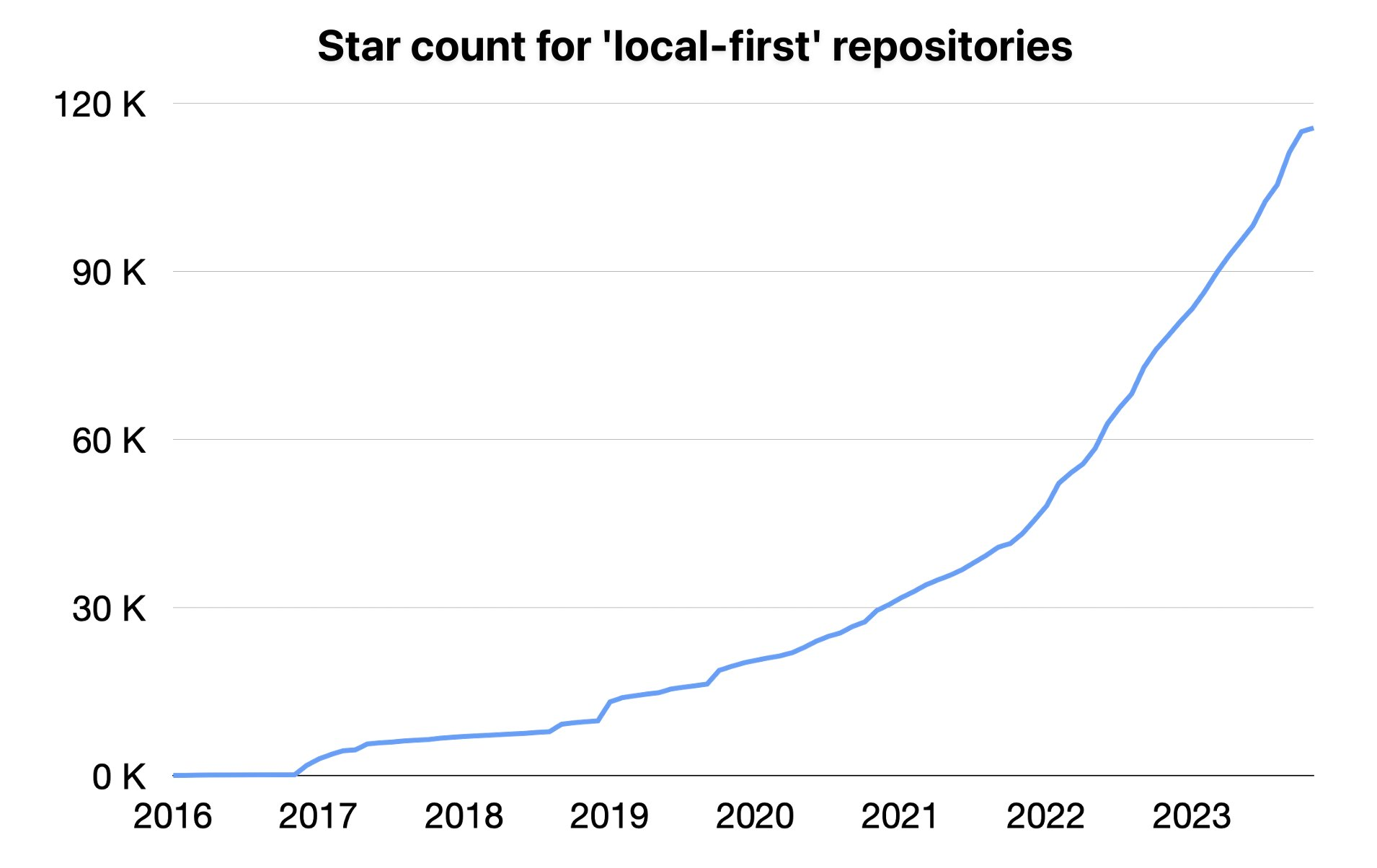
The annual growth rate of the "local-first" star count in GitHub has reached 40%+.
Integrating CRDTs with UI State Management
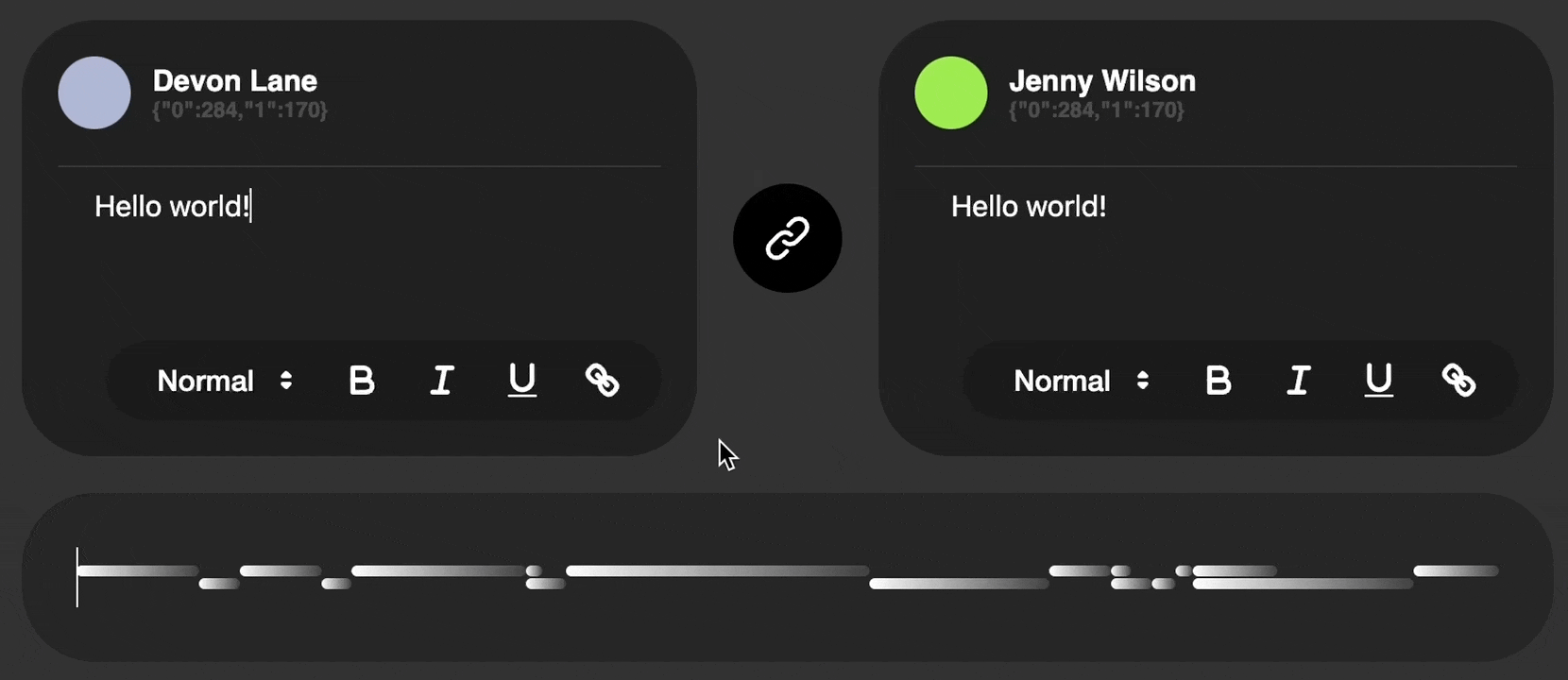
Since CRDTs enable conflict-free automatic merging, the challenge of managing distributed states shifts to "how to express operations and states on CRDTs".
Front-end state management libraries typically require developers to define how to retrieve State and specify Actions, as illustrated by this example from Vue's state management tool, Pinia:
export const useCartStore = defineStore({
id: "cart",
state: () => ({
rawItems: [] as string[],
}),
getters: {
items: (state): Array<{ name: string; amount: number }> =>
state.rawItems.reduce((items, item) => {
const existingItem = items.find((it) => it.name === item);
if (!existingItem) {
items.push({ name: item, amount: 1 });
} else {
existingItem.amount++;
}
return items;
}, [] as Array<{ name: string; amount: number }>),
},
actions: {
addItem(name: string) {
this.rawItems.push(name);
},
removeItem(name: string) {
const i = this.rawItems.lastIndexOf(name);
if (i > -1) this.rawItems.splice(i, 1);
},
async purchaseItems() {
const user = useUserStore();
if (!user.name) return;
console.log("Purchasing", this.items);
const n = this.items.length;
this.rawItems = [];
return n;
},
},
});This paradigm and CRDTs are easily compatible: The state in the state management libraries corresponds to CRDT types, and Action corresponds to a set of CRDT operations.
Thus, implementing UI state management through CRDTs does not require users to change their habits. It also has many advanced features:
- Make states automatically synchronizable / support real-time collaboration.
- Like Git, maintain a complete distributed editing history.
- It can store an extensively large editing history with a low memory footprint and a compact encoding size. Below is an example.
With this, you can effortlessly implement products with real-time / async collaboration and time machine features.
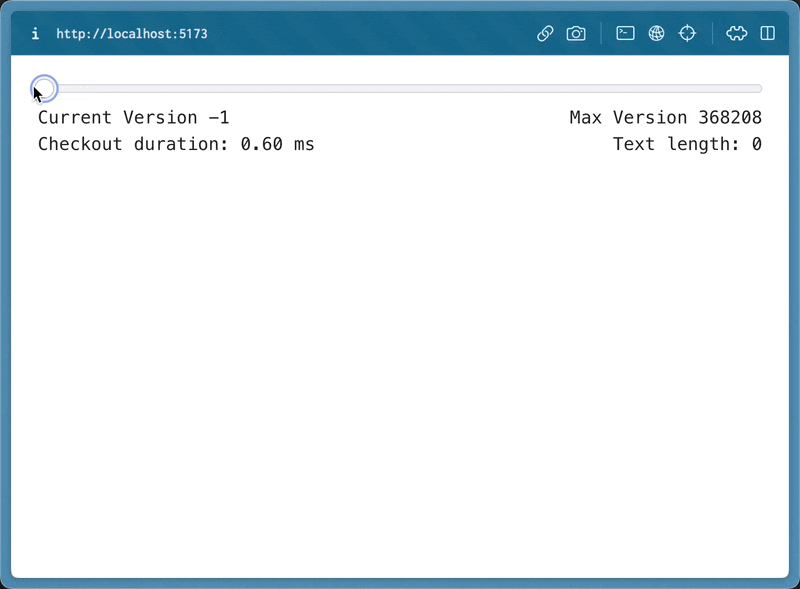
Time travel a document with 360,000+ operations using Loro. To load the whole history and playback, it only takes 8.4MB in memory. And the entire history only takes 361KB in storage. The editing trace is from
Introduction to Loro
Loro is our CRDTs library, now open-sourced under a permissive license. We believe a cooperative and friendly open-source community is key to creating outstanding developer experiences.
We aim to make Loro simple to use, extensible, and maintain high performance. The following is the latest status of Loro.
CRDTs
We have explored extensively, supporting a range of CRDT algorithms that have yet to be widely used.
OT-like CRDTs
Update: This algorithm is now called Event Graph Walker (Eg-Walker)
Our CRDTs library is built on the brilliant concept of OT-like CRDTs from Seph Gentle's Diamond-types (opens in a new tab). Joseph Gentle is currently writing a paper on it, which is worth looking forward to. Its notable features include reducing the cost of local operations, easier historical data reclamation, and sometimes lower storage and memory overhead. However, it relies on high-performance algorithms to apply remote operations. This design has great potential and we are excited about its future.
Brief Introduction to OT-like CRDT algorithms
To briefly introduce the concept of OT-like CRDTs, this part is complex and requires some prior knowledge. I might not encapsulate it well.
The general idea of OT-like CRDTs is that they do not retain the CRDTs' data structure (e.g., originLeft originRight information). When merging remote operations, they return to the lowest common ancestor in the directed acyclic graph history of local and remote, and from there, reapply each operation. This process reconstructs the CRDTs structure, resolving conflicts arising from parallel editing. Its advantage is that, since it doesn't need to retain these CRDTs Meta information, local operations are virtually cost-free, like OT, where only the index at which insertions and deletions occur needs to be saved. The trade-off is a longer time for merging remote operations, but this issue can be significantly mitigated with well-designed data structures and algorithms. Moreover, since most parallel edits last only a short time, the lowest common ancestor is not far, making the merging process quick.
The image below shows an example of merging versions 2@1 and 1@2 using this algorithm on a DAG. The algorithm needs to revert to the lowest common ancestor version 0@1 and apply all subsequent operations from there (a total of four operations). For a better understanding of this image, refer to https://www.loro.dev/docs/advanced/version_deep_dive (opens in a new tab)
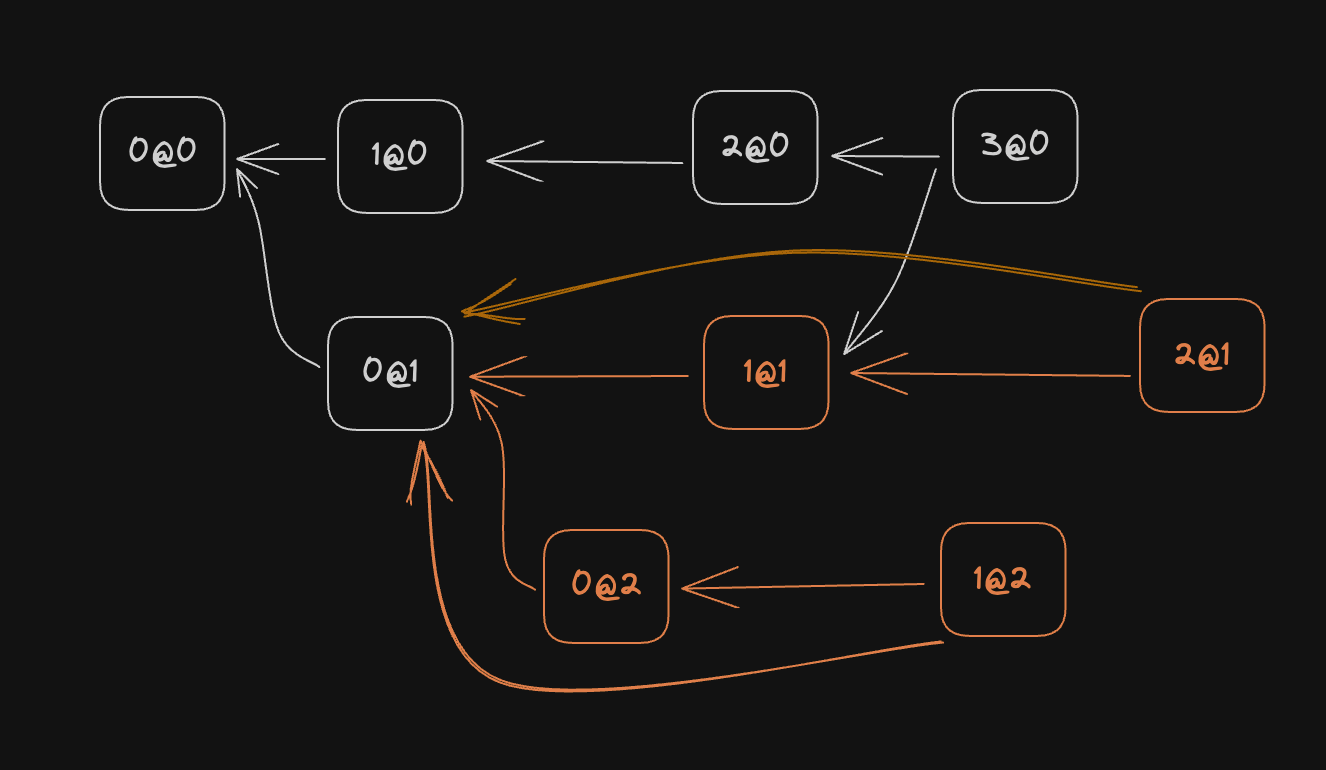
Rich Text CRDTs
In May of this year, we open-sourced the crdt-richtext (opens in a new tab) project, integrating the algorithms of the rich text CRDT (opens in a new tab) and the sequence CRDT Fugue by Matthew Weidner (opens in a new tab). A brief introduction to these two algorithms can be found in our blog at the time (opens in a new tab).
Based on our experience from previous projects, we have integrated a rich text CRDT and Fugue into our framework in the current Loro. However, the biggest challenge was that Peritext did not integrate well with OT-like CRDTs (opens in a new tab). We have recently overcome this issue. We developed a new rich text CRDT algorithm that can run on OT-like CRDTs and has passed the capabilities listed in the Peritext paper's Criteria for rich text CRDTs, with no new issues revealed in our current million fuzzing tests. We will write an article in the future specifically to introduce this algorithm.
Movable Tree
We have also supported a movable tree CRDT. Synchronizing tree movements is often complex due to the potential for circular references. Addressing this issue in the distributed environment is even more challenging.
We implemented Martin Kleppmann's paper, A Highly-Available Move Operation for Replicated Trees (opens in a new tab). The idea of this algorithm is to sort all move operations, ensuring the ordering is consistent across the replicas. Then, each operation is applied sequentially. If an operation would cause a circular reference, it has no effect.
We found it to be elegant in design and also performant. The time complexity of local operations is O(k) (k being the average tree depth, as circular reference detection is required). For applying remote operations, which entails inserting new operations into the sorted list, we must undo operations that are subsequent in the ordering, apply the remote operation, and then redo the undone operations, with a cost of O(km) (m being the number of operations to undo).
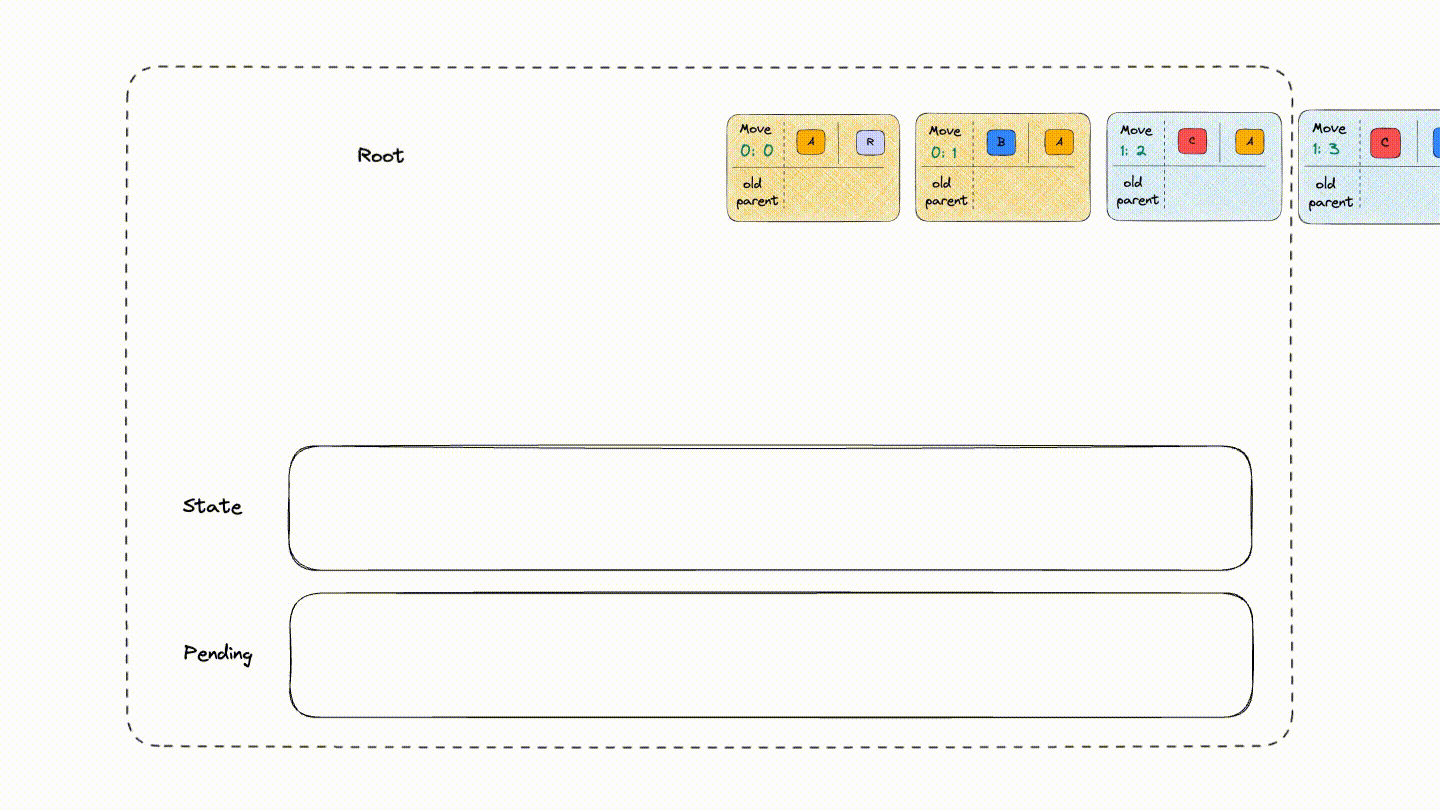
Our tests show that local operations involving ten thousand random movements among a thousand nodes take less than 10ms (tested on an M2 MAX chip). Moreover, the cost of merging remote operations in this algorithm is similar to applying remote operations in OT-like CRDTs, making it adoptable. We've also experimented with log-spaced snapshots (opens in a new tab) and immutable data structure approaches in our movable-tree project (opens in a new tab), concluding that the undo + redo method is the fastest and the most memory-efficient.
Data Structures
Designing and experimenting with data structures is routine in Loro's development process.
We previously open-sourced generic-btree (opens in a new tab) and have redesigned its structure for a more compact memory layout and cache-friendliness. Besides its remarkable performance, its flexibility enables us to support various information types required for Text, like utf16/Unicode code points/utf8, with minimal code. We also extensively reuse it to fulfill various requirements, highlighting Rust's impressive type expression capabilities.
Internally, we've separated the document's state from its history (opens in a new tab). The state represents the current form of the document, akin to Git's HEAD pointer, while the document's history resembles the complete operation history behind Git. Hence, multiple document states can correspond to the same history. This structure simplifies our code and facilitates future support for version control.
Most of our optimizations thus far have focused on text manipulations, historically one of the thorniest problems in CRDTs. In the future, we plan optimizations for a wider range of real-world scenarios.
The Future
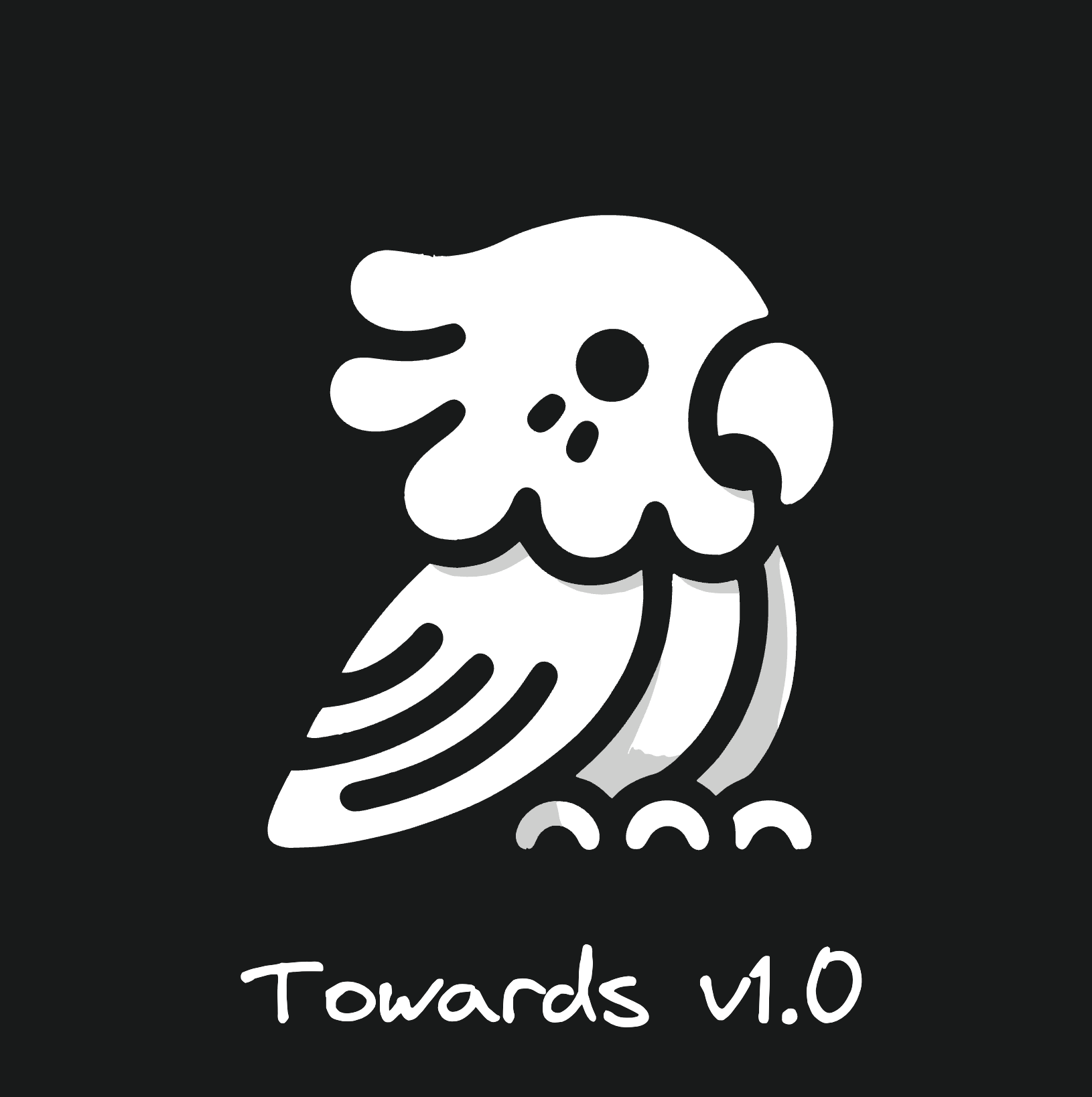
We aim to reach version 1.0 by mid-next year, with much work to complete.
Given our limited workforce, we will first provide a WASM interface for web developers to experiment with. Optimizing the WASM size is one of our goals for this phase. Much of our design work is still ongoing, and we plan to stabilize it in the next quarter, aiming for a simple yet powerful and flexible API. We welcome ideas and suggestions in our community discussions (opens in a new tab).
There's also extensive documentation work to make working with Loro enjoyable. A potential indicator of success would be GPT generating sufficiently good code based on our documentation.
Developing tools for developers is a challenging and exciting task. Many developer tools and visualization methods in front-end development are exceptionally good, and we hope to bring such experiences into the world of CRDTs and local-first development. DevTools will reveal CRDTs' hidden states and simplify control, making state maintenance and debugging a breeze.
We also plan to support richer CRDT semantics, including Movable Lists and global undo/redo operations to support more diverse application scenarios.
Seeking Collaborative Project Opportunities
Our design and optimization efforts need feedback from real-world applications. If you are excited about a local-first future and think Loro can help you, please contact us directly at zx@loro.dev. We're open to collaboration and ready to help.